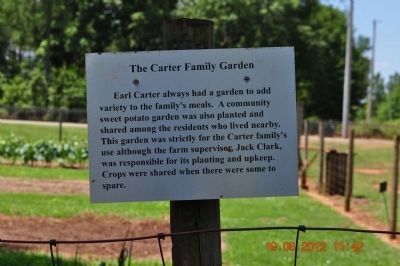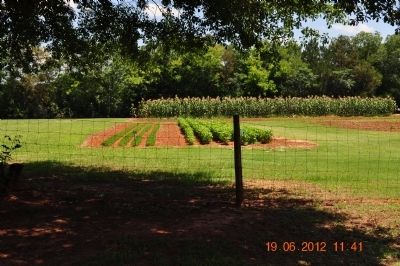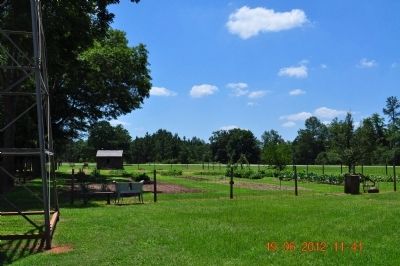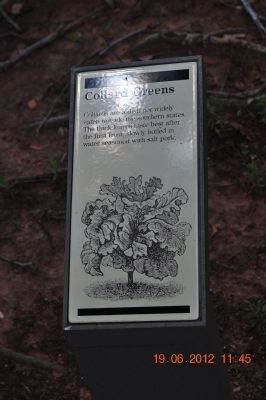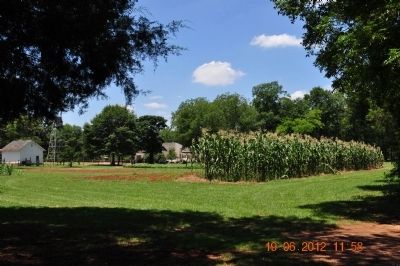Plains in Sumter County, Georgia — The American South (South Atlantic)
The Carter Family Garden
Inscription.
Earl Carter always had a garden to add variety to the family's meals. A community sweet potato garden was also planted and shared among the residents who lived nearby. This garden was strictly for the Carter family's use although the farm supervisor, Jack Clark, was responsible for its planting and upkeep. Crops were shared when there were some to spare.
Topics. This historical marker is listed in this topic list: Environment.
Location. 32° 1.557′ N, 84° 25.99′ W. Marker is in Plains, Georgia, in Sumter County. Marker can be reached from Old Plains Highway, on the right when traveling west. Marker is located in Plains, Georgia on Carter Boy Hood Farm Jimmy Carter National Historic Site United States Department of Interior. Touch for map. Marker is in this post office area: Plains GA 31780, United States of America. Touch for directions.
Other nearby markers. At least 8 other markers are within walking distance of this marker. Winds of Change (a few steps from this marker); Tennis Court (within shouting distance of this marker); The Earl and Lillian Carter Home (within shouting distance of this marker); Blacksmith Shop (within shouting distance of this marker); Cash Crops (about 300 feet away, measured in a direct line); Always a Reckoning (about 300 feet away); Jimmy Carter Slept Here (about 300 feet away); Never Far from Home (about 300 feet away). Touch for a list and map of all markers in Plains.
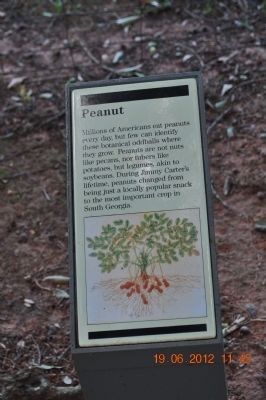
Photographed By Sandra Hughes, June 19, 2012
4. Peanut
Millions of Americans eat peanuts every day, but few can identify these botanical oddballs where they grow. Peanuts are not nuts like pecans, nor tubers like potatoes, but legumes, akin to soybeans. During Jimmy Carter's lifetime, peanuts changed from being just a local popular snack to the most important crop in South Georgia.
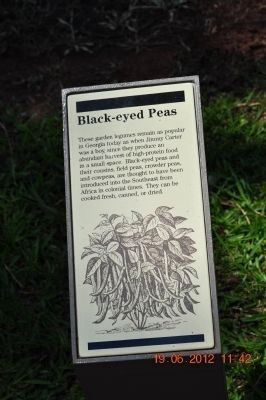
Photographed By Sandra Hughes, June 19, 2012
6. Black-eyed Peas
These garden legumes remain as popular in Georgia today as when Jimmy Carter was a boy, since they produce an abundant harvest of high-protein food in a small space. Black-eyed peas and their cousins, field peas, crowder peas, and cowpeas, are thought to have been introduced into the Southeast from Africa in colonial times. They can be cooked fresh, canned, or dried.
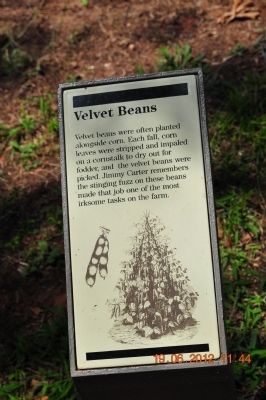
Photographed By Sandra Hughes, June 19, 2012
7. Velvet Beans
Velvet beans were often planted alongside corn. Each fall, corn leaves were stripped and impaled on a cornstalk to dry out for fodder, and the velvet beans were picket. Jimmy Carter remembers the stinging fuzz on these beans made the job one of the most irksome tasks on the farm.
Credits. This page was last revised on June 16, 2016. It was originally submitted on June 25, 2012, by Sandra Hughes Tidwell of Killen, Alabama, USA. This page has been viewed 377 times since then and 9 times this year. Photos: 1, 2, 3, 4, 5, 6, 7, 8. submitted on June 25, 2012, by Sandra Hughes Tidwell of Killen, Alabama, USA. • Craig Swain was the editor who published this page.
